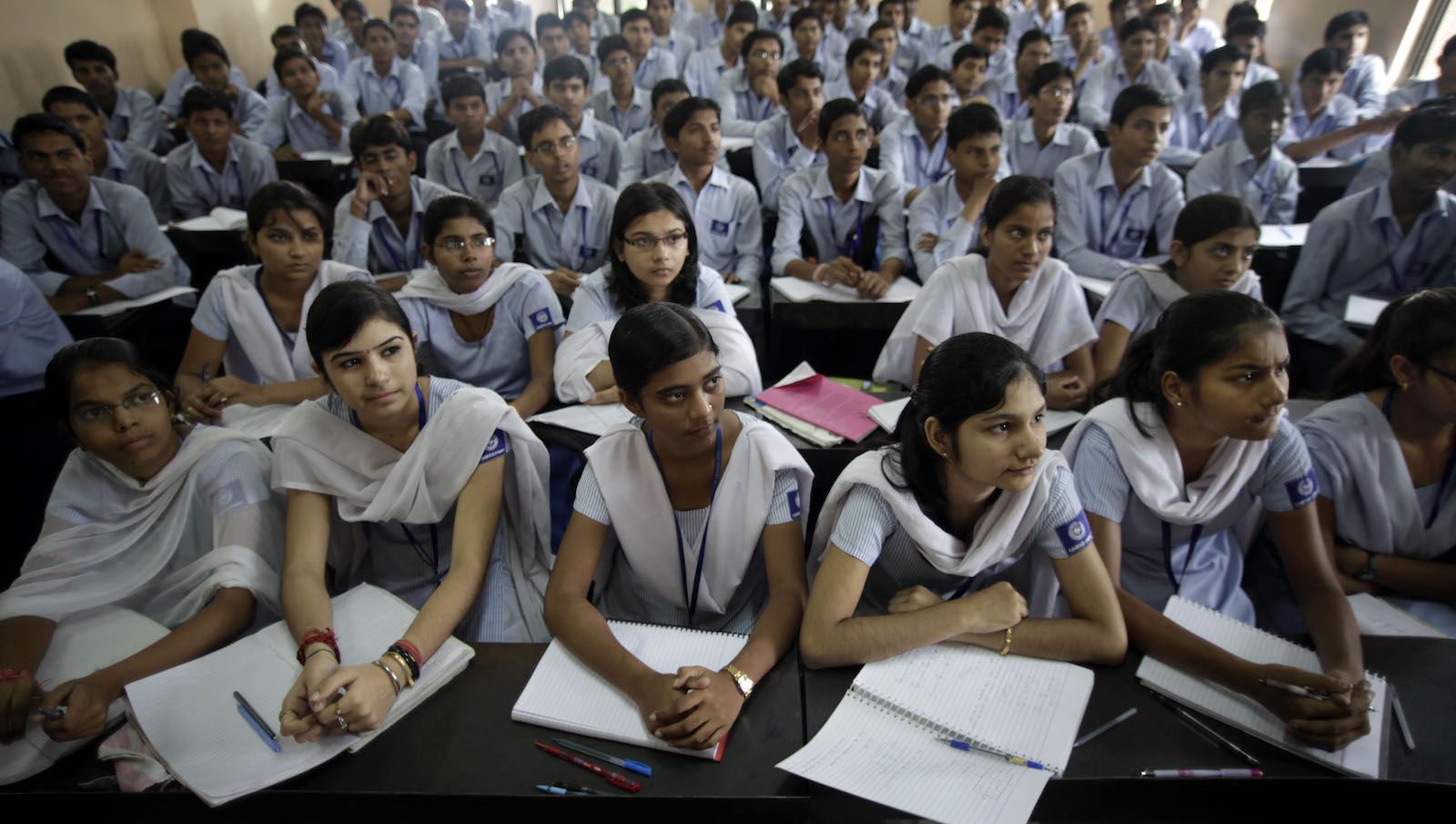Education in India
Share

Education in India has a rich history of laurels dating returned to Nalanda college days.
Nalanda University in Bihar changed into a center of excellence for the instructional desires of college students from all across the globe.

India training falls beneath the discretion of kingdom and union governments, respectively.
Also, numerous articles of our constitution purpose at enacting education as the essential proper. Most of the colleges in India are either critical government or nation government-controlled. Pleasantly, training in India has made first-rate progress in offering primary education in terms of attendance charges and expanding the literacy to over thirds of the population.
India’s advanced academic scenes have been noted in many instances as one of the noble purposes for India’s progressed low-cost state of affairs. Despite developing a marketplace for training, still, 35% of the populace is illiterate and most effective, a small variety of approximately 15% of populations attain high faculties.
In India, the National Council of Education Research & Training is the apex frame for syllabus associated with faculty-level schooling. As a result, the NCERT presents economic education to many schools in India and ensures their clean functioning and not to forget about the implementation of the various educational policies in their correct codecs.
Other boards similar to the national authorities managed boards, there are other boards as properly supplying and devoted to offering high-quality education across India are Central Board of Secondary Education (CBSE), Indian School Certificate Examinations (ISCE), National Institute of Open Schoolings (NIOS), and many others.
Let’s see the division of Indian education directed at distinct levels, consequently.
* Primary Education- This phase of tutorial degree emphasizes basic training to college students until the age of 14 years.
* Secondary Education- this phase of the Indian training scene changed into dedicated to the cause of students of various tough attributes like disability.
* Technical Education- Technical schoolings like engineering, control, medication, regulation, and so forth changed into categorized as expert fields. Those streams are monitored through none apart from the technical training of India referred to as, All India Council of Technical Education (AICTE). There might be found limitless numbers of colleges in India offering those kinds of schooling.
* Distance Education- There are various universities and deemed schools that offer distance training in almost all of the streams of education. Basically, for those who don’t have time to enroll in a complete-fledged classroom program, these distance training have become out a boon to be educated while being away at their respective works.
* Online Degrees- With the onset of the technological revolution in India in full swing, various academic bodies capitalized on the identical situation and started to offer their courseware over the net. People who don’t have time for full-time publications or even distance applications can simply join themselves at an online application and earn the degree in their respective timings thus.
* Women Education- Women Education, because of an increased level of recognition, some of the loads, has reached a new peak of crescendo in the respective fields. Now, extra girls and ladies are visible enrolling themselves for the equal. Incidentally, educating girls is like teaching the complete own family as she is the person that nourishes the family. As a consequence, the circulate is the greater evident while as compared to their male counterpart.
Conclusion- With authorities leaving no stone unturned to rouse a feeling of focus as away as the smartness of the schooling in India is involved, and additionally giving scholarships, cycles to women and additionally praiseworthy college students.
It’s being speculated and discovered that a new lease of existence is ready to hit the education scene of India and change it for the best!








